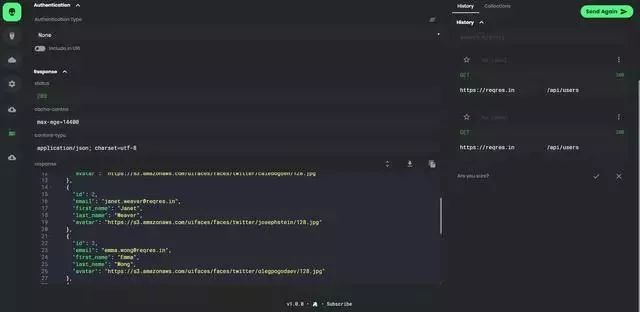@Async介绍
在Spring中,基于@Async标注的方法,称之为异步方法;这些方法将在执行的时候,将会在独立的线程中被执行,调用者无需等待它的完成,即可继续其他的操作。
配置
java方式:
@Configuration
@EnableAsync
public class SpringAsyncConfig { … }
XML方式:
<task:executor id=”myexecutor” pool-size=”5″ />
<task:annotation-driven executor=”myexecutor”/>
基于@Async无返回值调用
@Async //标注使用
public void asyncMethodWithVoidReturnType() {
System.out.println("Execute method asynchronously. "
+ Thread.currentThread().getName());
}
基于@Async返回值的调用
@Async
public Future<String> asyncMethodWithReturnType() {
System.out.println("Execute method asynchronously - "
+ Thread.currentThread().getName());
try {
Thread.sleep(5000);
return new AsyncResult<String>("hello world !!!!");
} catch (InterruptedException e) {
//
}
return null;
}
以上示例可以发现,返回的数据类型为Future类型,其为一个接口。具体的结果类型为AsyncResult,这个是需要注意的地方。
例子:
public void testAsyncAnnotationForMethodsWithReturnType() throws InterruptedException, ExecutionException {
System.out.println("Invoking an asynchronous method. "
+ Thread.currentThread().getName());
Future<String> future = asyncAnnotationExample.asyncMethodWithReturnType();
while (true) { ///这里使用了循环判断,等待获取结果信息
if (future.isDone()) { //判断是否执行完毕
System.out.println("Result from asynchronous process - " + future.get());
break;
}
System.out.println("Continue doing something else. ");
Thread.sleep(1000);
}
}
基于@Async调用中的异常处理机制
在异步方法中,如果出现异常,对于调用者caller而言,是无法感知的。如果确实需要进行异常处理,则按照如下方法来进行处理:
1. 自定义实现AsyncTaskExecutor的任务执行器在这里定义处理具体异常的逻辑和方式;
2. 配置由自定义的TaskExecutor替代内置的任务执行器。
示例步骤1,自定义的TaskExecutor:
public class ExceptionHandlingAsyncTaskExecutor implements AsyncTaskExecutor {
private AsyncTaskExecutor executor;
public ExceptionHandlingAsyncTaskExecutor(AsyncTaskExecutor executor) {
this.executor = executor;
}
////用独立的线程来包装,@Async其本质就是如此
public void execute(Runnable task) {
executor.execute(createWrappedRunnable(task));
}
public void execute(Runnable task, long startTimeout) {
/用独立的线程来包装,@Async其本质就是如此
executor.execute(createWrappedRunnable(task), startTimeout);
}
public Future submit(Runnable task) { return executor.submit(createWrappedRunnable(task));
//用独立的线程来包装,@Async其本质就是如此。
}
public Future submit(final Callable task) {
//用独立的线程来包装,@Async其本质就是如此。
return executor.submit(createCallable(task));
}
private Callable createCallable(final Callable task) {
return new Callable() {
public T call() throws Exception {
try {
return task.call();
} catch (Exception ex) {
handle(ex);
throw ex;
}
}
};
}
private Runnable createWrappedRunnable(final Runnable task) {
return new Runnable() {
public void run() {
try {
task.run();
} catch (Exception ex) {
handle(ex);
}
}
};
}
private void handle(Exception ex) {
//具体的异常逻辑处理的地方
System.err.println("Error during @Async execution: " + ex);
}
}
分析: 可以发现其是实现了AsyncTaskExecutor, 用独立的线程来执行具体的每个方法操作。在createCallable和createWrapperRunnable中,定义了异常的处理方式和机制。handle()就是未来我们需要关注的异常处理的地方。
配置文件中的内容:
<task:annotation-driven executor=”exceptionHandlingTaskExecutor” scheduler=”defaultTaskScheduler” />
<bean id=”exceptionHandlingTaskExecutor” class=”nl.jborsje.blog.examples.ExceptionHandlingAsyncTaskExecutor”>
<constructor-arg ref=”defaultTaskExecutor” />
</bean>
<task:executor id=”defaultTaskExecutor” pool-size=”5″ />
<task:scheduler id=”defaultTaskScheduler” pool-size=”1″ />
@Async调用中的事务处理机制
在@Async标注的方法,同时也适用了@Transactional进行了标注;在其调用数据库操作之时,将无法产生事务管理的控制,原因就在于其是基于异步处理的操作。
那该如何给这些操作添加事务管理呢?可以将需要事务管理操作的方法放置到异步方法内部,在内部被调用的方法上添加@Transactional.
例如:
方法A,使用了@Async/@Transactional来标注,但是无法产生事务控制的目的。
方法B,使用了@Async来标注, B中调用了C、D,C/D分别使用@Transactional做了标注,则可实现事务控制的目的。





近期评论